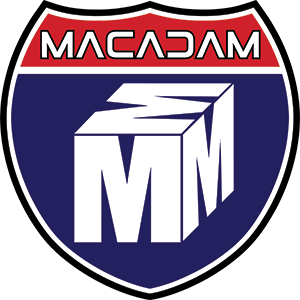Installing a new concrete surface involves different equipment and techniques than resurfacing an existing surface.
In order to ensure a smooth and level surface, there must be sufficient observation, planning, preparation, and installation.
Our experienced team has handled many new construction concrete projects and is ready to help you build something spectacular.
Installing new concrete in a construction project involves several steps to ensure a strong, durable, and properly finished concrete structure. Here’s an overview of the process:
- Site Preparation:
- Excavation: The construction site is excavated to the required depth, taking into account factors like soil stability, drainage, and any necessary sub-base or foundation preparation.
- Formwork: The formwork, which can be made of wood, steel, or other materials, is constructed to define the shape and dimensions of the concrete structure. It provides a mold or framework to contain the fresh concrete during placement and curing.
- Reinforcement: If necessary, steel reinforcement, such as rebar or wire mesh, is installed within the formwork to add strength and structural integrity to the concrete. The reinforcement is positioned according to engineering specifications and is tied together to form a sturdy framework.
- Mixing and Placing Concrete:
- Concrete Mix Design: The appropriate concrete mix is determined based on project requirements, including factors like strength, durability, slump (consistency), and environmental conditions. The mix design specifies the proportions of cement, aggregates (such as sand and gravel), water, and any additives or admixtures.
- Mixing: The concrete ingredients are mixed thoroughly to ensure a homogeneous mixture. This can be done using a concrete mixer truck, a batching plant, or on-site mixing equipment. The mixing process should adhere to the recommended mixing time and ensure proper blending of the components.
- Concrete Placement: The mixed concrete is transported to the construction site and placed within the prepared formwork. It is poured in layers or “lifts” to the desired thickness, taking care to avoid segregation or excessive air entrapment. The concrete is spread evenly using shovels, rakes, or vibrating screeds.
- Consolidation and Finishing:
- Consolidation: To remove air voids and achieve proper compaction, the concrete is consolidated using various techniques. This can involve the use of vibrating tools, such as a concrete vibrator or screed, to eliminate trapped air bubbles and ensure a dense and uniform concrete mass.
- Finishing: Once the concrete is compacted, the surface is finished to achieve the desired texture and appearance. This can involve techniques such as screeding, floating, troweling, or brooming. Finishing helps create a smooth, level surface and can enhance durability, aesthetics, and functionality.
- Curing and Protection:
- Curing: After the finishing process, the concrete needs to be properly cured to promote hydration and strength development. This involves maintaining the moisture content and temperature of the concrete during the initial curing period, typically through techniques like moist curing, covering with plastic sheets, or applying curing compounds.
- Protection: The newly placed concrete needs protection from excessive moisture loss, temperature extremes, and external damage. Measures like covering the concrete with curing blankets, avoiding heavy traffic, and implementing appropriate construction practices are taken to protect the fresh concrete until it reaches its desired strength.
- Jointing and Sealing:
- Jointing: Control joints or expansion joints are typically cut or formed into the concrete to control cracking caused by shrinkage or movement. These joints help accommodate concrete expansion and contraction and prevent the development of random cracks. The spacing and design of the joints depend on various factors, including slab thickness, expected loads, and temperature differentials.
- Sealing: Concrete joints may be sealed with joint sealants to provide protection against moisture infiltration and to enhance the lifespan of the structure. Joint sealants help prevent water damage, corrosion, and the intrusion of debris into the joints.
- Post-Installation Maintenance:
- After the concrete has cured sufficiently, regular maintenance practices should be followed to ensure its longevity. This may include periodic cleaning, sealing (if applicable), and addressing any repairs or surface defects that may occur over time.
It’s important to note that the specific steps and techniques for installing concrete may vary depending on the project requirements, site conditions, and the type of concrete structure being constructed. Adhering to industry standards, proper equipment usage, and skilled craftsmanship are essential for achieving a high-quality concrete installation.


